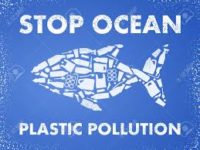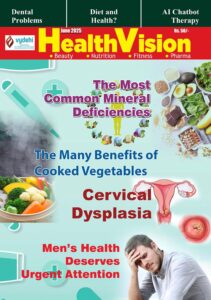MICROPLASTICS has now become the nhe new hazard for mankind. Airborne plastics are known to cause lung stress and leads to several systemic health problems including cardiovascular disease.
Plastics are materials that bend and change shape – these have reshaped the world of convenience! Plastics are ubiquitous – from bottles of packaged water to various packs of medicines (including medicinal liquids) – and these plastic bottles have replaced glass. Plastic has endeared to manufacturers and marketers due to processing convenience, light weight, unbreakable quality and improving product presentation.
Plastics can be mould to desired shape and size; they are easier to produce in large scale and meet the demand for packaging material as compared to glass. Plastics are chain – like molecules, hence, also called polymers. Examples include: HDPE (high density polyethylene), PVC (poly vinyl chloride) and PET (poly ethylene terephthalate). PET bottles and containers are very popular due to elegance, storage and portability.
Microplastics in water


The World Health Organization (WHO) in 2018 created waves worldwide when it announced a review into the potential risks of microplastics in bottled water, after an analysis found more than 90% of bottled water brands contained tiny microscopic size plastic bits. The bottled water contained twice the amount of microplastics as compared to tap water! Polypropylene was the most common plastic in bottled water!!
Plastic is the largest solid polluter of oceans. Waters in seas are contaminated by degrading plastics and several microplastics and nanoplastics are entering the human food chain through fish and marine life that consume these plastics. Ingested microplastics block the digestive systems of marine life, cause infertility in some aquatic creatures and damage liver of sea life.
The challenge to health and the environment is not just from the microplastics per se, several dyes, additives like plastic stiffeners and uv stabilizers in the plastic are also toxic. When microplastics degrade to nanoplastics – fragments of nanosize (10-9 of a meter) (1 billionth to 100 billionth size plastic substances) – they are even less studied. Nanoplastics can penetrate into tissues. Microplastics are not likely to penetrate across the digestive tract.
Tap water too has microplastic load, reports The Lancet (Oct 2017). Microplastic contamination of water and subsequent effects on health is not yet fully studied. Many scientific studies are on. The contemporary scientific challenge is to study the effect of microplastic consumption similar to the studies on consumption of heavy metals and industrial effluents. However, microplastics are suspected to cause several health issues.
BPA challenge
Related to the microplastics challenge, is the BPA factor. BPA stands for Bisphenol A. This chemical is added to plastics for making it stronger. BPA enters the body through skin contact too. BPA is a known chemical that disrupts endocrine or hormonal system. BPA is also linked to cancer, infertility, toxicity to foetus, and other diseases. It is essential to emphasize that baby feeding bottles must be BPA-free when used by mothers for feeding their babies. Ecotoxicity of microplastics is a frontier science. Many studies are on in the field of microplastic pollution. Some studies are focusing on release of BPA from microplastics and the consequent possible damage to humans.
Airborne microplastics


Time to take double care
There is no doubt a plastic plague is in the making!! Current scientific evidence does not point to ill effects of microplastics in bottled and other types of water. WHO too is gathering data on this matter. Airborne plastics are known to cause lung stress and leads to several systemic health problems including cardiovascular disease. Hence, it is prudent to limit the use of plastics through conscious effort, increase use of biodegradable packaging materials, and one should avoid contaminating planet Earth with plastic. Let us bend and change to a better lifestyle!


Sunil S Chiplunkar
B Pharm M Pharm (Pharmacology) MBA (Marketing) PGDHRM (PhD – Pharmaceutical Sciences)
VP – Business Development, Group Pharmaceuticals, Bangalore-560055
Ph: 080 2337 6766 Mob: 6364578669
Email: 1969sunilchiplunkar@gmail.com
www.pharmaceuticalshealthcare.blogspot.in











